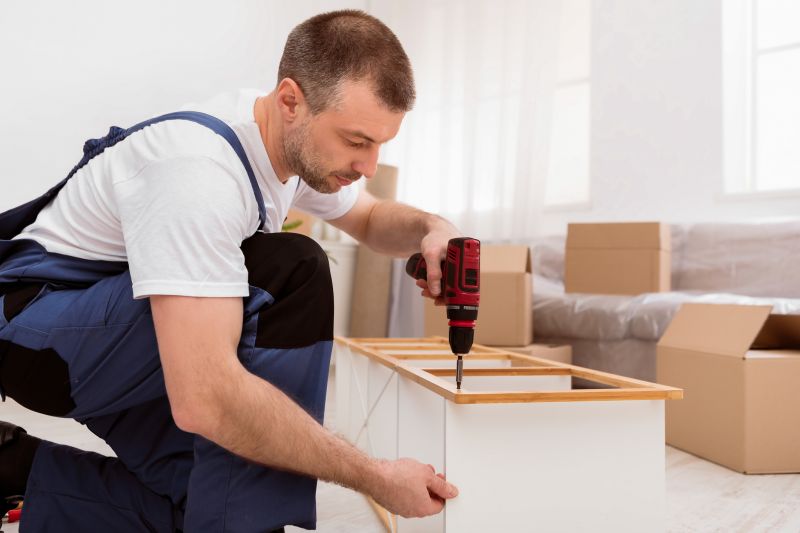Leading Products For Easy And Reliable Wood Chair Assembly
Select from top-rated supplies that make assembling wood chairs straightforward, secure, and efficient for all skill levels.
 When it comes to assembling wood chairs, selecting the right products can significantly influence the durability and stability of the finished piece. From traditional wooden dowels to modern metal fasteners, there is a wide array of options designed to suit various styles and repair needs. Proper assembly not only ensures the longevity of the chair but also maintains its aesthetic appeal, making the process both functional and satisfying.
When it comes to assembling wood chairs, selecting the right products can significantly influence the durability and stability of the finished piece. From traditional wooden dowels to modern metal fasteners, there is a wide array of options designed to suit various styles and repair needs. Proper assembly not only ensures the longevity of the chair but also maintains its aesthetic appeal, making the process both functional and satisfying.
Top Overall Option
Wood Joinery Fastening System
A comprehensive wood joinery fastening system offers a versatile solution for assembling and repairing wood chairs. It typically includes a selection of dowels, corner blocks, clamps, and specialized screws designed to create strong, seamless joints. This system is suitable for both novice and experienced woodworkers seeking reliable and straightforward assembly options.
Types of Products For Wood Chair Assemblies
Wood Dowels
Smooth cylindrical rods used to join two pieces of wood with precision and stability.
Corner Blocks
Reinforcement pieces that provide additional strength at chair joints, often made of wood or metal.
Wood Screws
Variety of screws designed specifically for wood, available in different sizes and head types.
Brackets and Corner Supports
Metal or wooden brackets used to secure joints and prevent wobbling.
Wood Glue and Adhesives
Specialized glues formulated for wood to enhance joint strength when combined with mechanical fasteners.
Nails and Brad Nails
Fasteners used for quick assembly, often hidden or used in combination with other hardware.
Toggle Bolts
Heavy-duty fasteners ideal for securing chair legs or supports to the main frame.
Clamps and Vises
Tools used to hold pieces in place during assembly or gluing processes.
Threaded Inserts
Metal inserts that provide durable threaded holes for screws in wood joints.
Pocket Hole Screws
Special screws designed for pocket hole joinery, offering hidden and strong connections.
Doweling Jigs
Tools that help drill precise holes for dowels, ensuring perfect alignment.
Reinforcement Brackets
Metal brackets that add stability to chair joints, especially for repair projects.
Elastic Ties and Straps
Flexible fasteners used temporarily or for added support during assembly.
Wood Clamps
Clamps designed to hold pieces tightly during gluing or assembly.
Peg and Dowel Pins
Small wooden or metal pins used to secure joints and add decorative touches.
Popular Choices
Complete kits with drill bits and dowels suitable for various furniture projects.
Metal brackets used to reinforce chair joints and improve stability.
Variety packs of screws designed for different thicknesses and applications.
Tools for creating hidden joints with pocket screws, popular for DIY furniture.
Multiple clamps for holding pieces securely during assembly or gluing.
Sets that include inserts and installation tools for durable screw connections.
Popular for strengthening joints in both new builds and repairs.
Adhesive kits with multiple bottles suitable for various woodworking projects.
Bulk packs of nails for quick assembly and repairs.
Heavy-duty fasteners for securing larger or heavier chair components.
Small pins used to secure joints or add decorative elements.
Flexible supports for temporary holding or added stability.
Clamps that hold pieces in place during assembly or finishing.
Wood chair assembly products encompass a variety of hardware and tools that facilitate secure joints and seamless finishes. These include different types of fasteners, such as screws, bolts, and nails, as well as specialized connectors like corner blocks and reinforcement brackets. Additionally, adhesives and wood glues are often used in conjunction with mechanical fasteners to provide extra strength. The choice of products depends on factors like the chair’s design, the type of wood, and the intended use.
For those undertaking repairs or custom builds, understanding the compatibility of these products with various wood types and construction methods is essential. Properly selected hardware can prevent common issues such as wobbling, looseness, or splitting. It is also important to consider ease of installation, especially for DIY enthusiasts who may not have professional tools. The right combination of products can make assembly more straightforward while ensuring a secure, long-lasting result.
Ultimately, investing in quality assembly products can lead to better craftsmanship and a more satisfying woodworking experience. Whether restoring an antique chair or building a new piece from scratch, the right hardware and accessories are key to achieving a stable and attractive finished product. Exploring different options and understanding their uses will help you make informed decisions tailored to your specific project needs.
Key Buying Considerations
- Compatibility with the type of wood used in your chair project
- Strength and durability of the fastening product for intended use
- Ease of installation, especially for DIY projects
- Size and length appropriate for the thickness of the wood pieces
- Corrosion resistance if the chair will be used outdoors or in humid environments
- Type of joint being assembled, such as corner, leg, or support joints
- Compatibility with existing hardware or repair parts
- Availability of matching tools or accessories like jigs and clamps
- Material preferences, whether metal, wood, or composite
- Potential for concealment or aesthetic considerations if visible fasteners are an issue
- Ease of disassembly if future repairs or adjustments are anticipated
- Cost-effectiveness based on project scope and hardware quality
- Brand reputation and user reviews for reliability
- Presence of detailed instructions or guides for proper installation
- Environmental conditions that may affect hardware performance
